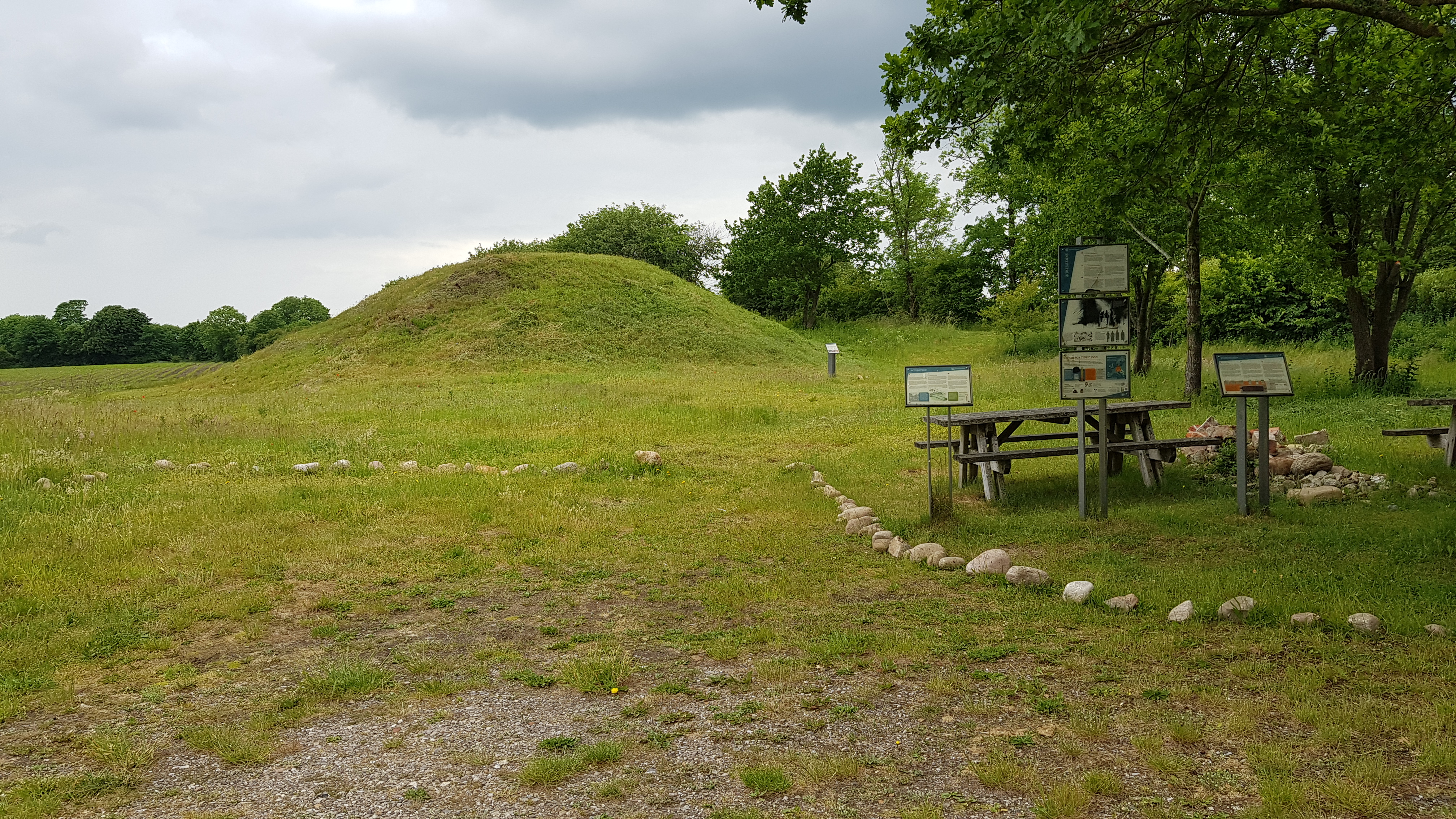Skrydstrup Woman on:
[Wikipedia]
[Google]
[Amazon]
 The Skrydstrup Woman was unearthed from a
The Skrydstrup Woman was unearthed from a

 The Skrydstrup Woman was unearthed from a
The Skrydstrup Woman was unearthed from a tumulus
A tumulus (plural tumuli) is a mound of earth and stones raised over a grave or graves. Tumuli are also known as barrows, burial mounds or '' kurgans'', and may be found throughout much of the world. A cairn, which is a mound of stones ...
in southern Jutland
Jutland ( da, Jylland ; german: Jütland ; ang, Ēota land ), known anciently as the Cimbric or Cimbrian Peninsula ( la, Cimbricus Chersonesus; da, den Kimbriske Halvø, links=no or ; german: Kimbrische Halbinsel, links=no), is a peninsula of ...
in Denmark in 1935. Carbon-14 dating showed that she had died between 1382 and 1129 BCE; examination also revealed that she was around 18–19 years old at the time of death, and that she had been buried in the summertime.
Excavation of burial mound

Museum Sønderjylland Museum Sønderjylland is a constellation of museums in the Southern Jutland region of Denmark, in the municipalities of Tønder, Sønderborg, Haderslev, and Aabenraa. It was formed in 2007 to gather focus on the history and culture of the region und ...
's manager Christian M. Lund was responsible for the excavation of the burial mound. It was found southwest of Vojens
Vojens (german: Woyens) is a railway town in Denmark with a population of 7,475 (1 January 2022).
She was buried in a short-sleeved woolen linen blouse with embroidery on the sleeves and neckline. A large square cloth of wool, gathered at the top with a belt, covered her from the waist to the feet. Attached to the belt was an ornate horn comb. The clothes were made of wool from a dark, reddish-brown sheep. The only jewelry was her large spiral earrings of 24 karat gold, which along with the blouse indicated she was of higher class. Her ash blonde hair was about long and held in a complex hairstyle. Covering the hair was a fine hair net of unbraided horse hair made with the sprang technique, which was attached to an almost long woolen cord at the front and back. The string was wrapped several times around the head so that it sat like a headband and held the hairstyle and hairnet securely in place.
Professor Karin Frei from the
National Museum of Denmark
The National Museum of Denmark (Nationalmuseet) in Copenhagen is Denmark's largest museum of cultural history, comprising the histories of Danish and foreign cultures, alike. The museum's main building is located a short distance from Strøge ...
described her as an elegant, queen-like figure.
Origin and life
A study published in 2019 found that the Skrydstrup Woman was most likely from well beyond the modern borders of Denmark. Research from 2017 had suggested that she could have come from the Czech Republic, southern Germany, France or Sweden. She probably moved to Scandinavia from her original home when she was about 13 or 14.See also
* Egtved Girl * Haraldskær Woman *Mummy
A mummy is a dead human or an animal whose soft tissues and organs have been preserved by either intentional or accidental exposure to chemicals, extreme cold, very low humidity, or lack of air, so that the recovered body does not decay fu ...
*Tollund Man
The Tollund Man (died 405–380 BC) is a naturally mummified corpse of a man who lived during the 5th century BC, during the period characterised in Scandinavia as the Pre-Roman Iron Age. He was found in 1950, preserved as a bog body, near Sil ...
References
Bibliography
* * * * * * * * * * * * * * *{{cite journal, author=Price, T. Douglas, date=2021, title=Problems with strontium isotopic proveniencing in Denmark?, journal=Danish Journal of Archaeology, volume=10, pages=1-12 14th-century BC women 1935 archaeological discoveries Archaeological discoveries in Denmark Archaeology of death Deaths in Denmark Germanic archaeological artifacts Mummies Nordic Bronze Age Prehistoric objects in the National Museum of Denmark Unsolved deaths